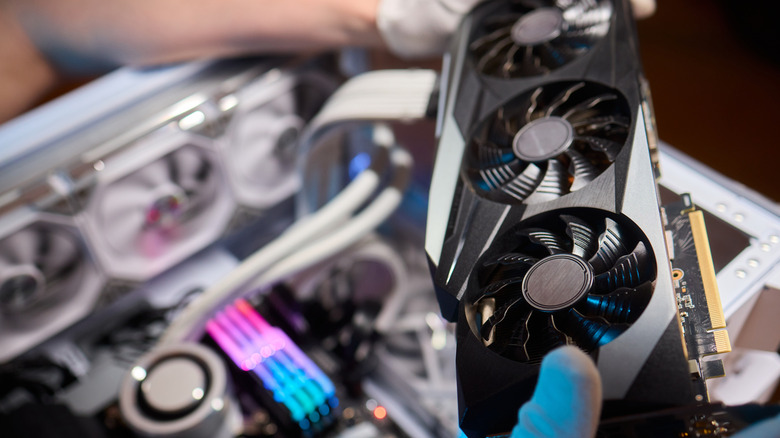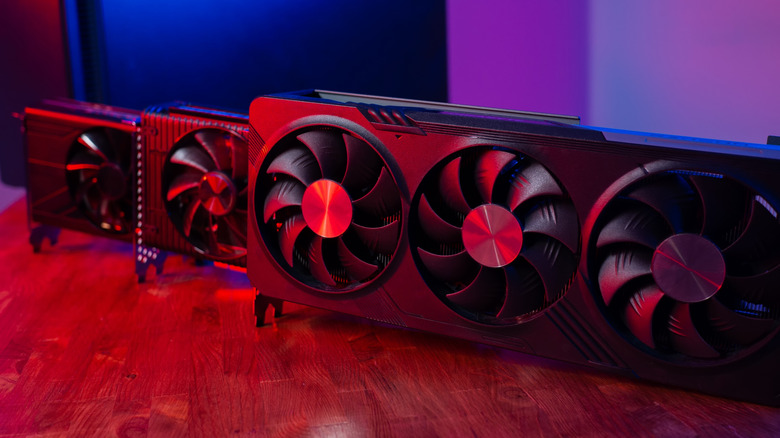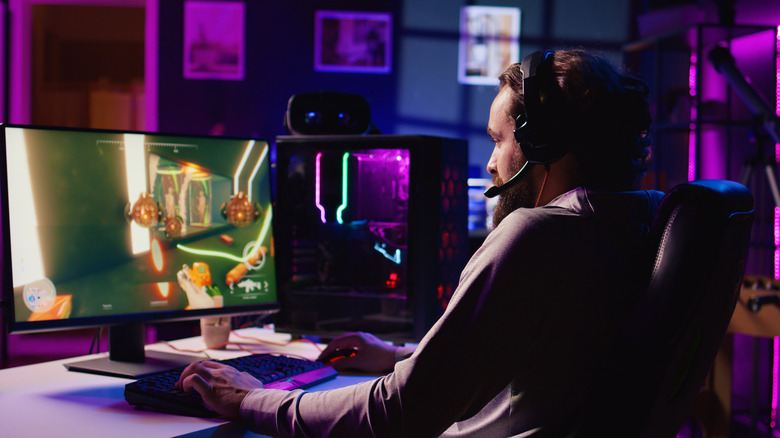Why Are Dual GPUs No Longer Used In Gaming PCs?
GPUs are the undisputed crown jewels of any gaming PC. While single GPU setups are the norm today, it wasn't long ago that gaming PCs stacked two, three, or even four GPUs. Apart from making the PC look like an absolute beast, the multiple GPUs delivered performance boosts in graphically intensive tasks. Both NVIDIA and AMD offered solutions to support multiple GPU configurations, promising significant frame rate boosts at higher resolutions — the most sought-after features for any gamer. Despite their performance improvements, dual GPUs are now a relic of the past.
The key driver for their demise was their bad return on investment. Using two GPUs in unison didn't double the performance, but it certainly cost twice as much as a single GPU. Additionally, game developers needed to go the extra mile and optimize their games for multiple GPUs. As support from both manufacturers and game developers dwindled, the gaming industry ditched dual GPU setups and pivoted to single GPU builds. Let's revisit the once-popular dual GPUs and the reasons that led to their downfall despite the performance improvements.
Multiple GPUs didn't justify the cost
NVIDIA's SLI (Scalable Link Interface), which later became the NVLink, offered better dual GPU performance over the previous PCIe-based solutions. However, even that could not force dual GPUs into widespread adoption. Multi-GPU setups remained an enthusiast-only thing throughout their history, mostly due to their poor returns. GPUs have always been and are still an expensive component of any gaming PC. The most powerful graphics card on the market can cost anywhere from a few hundred to a few thousand dollars. Stacking multiple of these can quickly drive up the overall cost of the PC. However, the performance gains came nowhere close to the massive increase in cost.
At best, a dual GPU setup could offer 50% more performance than a single GPU in some of the most optimized games. The performance gains went further down as you added more than two GPUs to a build. Additionally, stacking multiple power-hungry GPUs often required a powerful power supply, resulting in inflated electricity bills. Multiple GPUs also generate a significant amount of heat, requiring more effective cooling methods for your gaming PC, which further increases the overall cost of the build. The minor performance boost didn't quite justify the outrageous cost of building a dual GPU PC.
Additionally, most modern GPUs , such as NVIDIA's RTX 4090 or AMD's 7900 XTX, can handle 4K gaming on their own, eliminating the need for an additional GPU.
The performance advantage largely depended on game developers
Even after spending a fortune on GPUs, your PC didn't perform any better in games unless the developer specifically designed it to utilize the other GPUs. While many popular titles supported dual GPUs, a large chunk of titles chose to ignore the technology altogether. Out of the supported titles, finding a properly optimized game that effectively utilized the GPUs was a rare feat. Many poorly optimized games theoretically offered better frame rates but were notorious for microstutters. The constant microstutters led to inconsistent gameplay that felt worse than the single-GPU experience, despite the higher frame rate. Ask any gamer, and they would happily take a constant 30 FPS gameplay over 60 FPS with micro stutters.
The final nail in the coffin was NVIDIA's decision to ditch NVlink in 2021 and pivot to AI features like DLSS. As manufacturer support thinned, the already unviable dual GPUs made even less sense for gamers.


